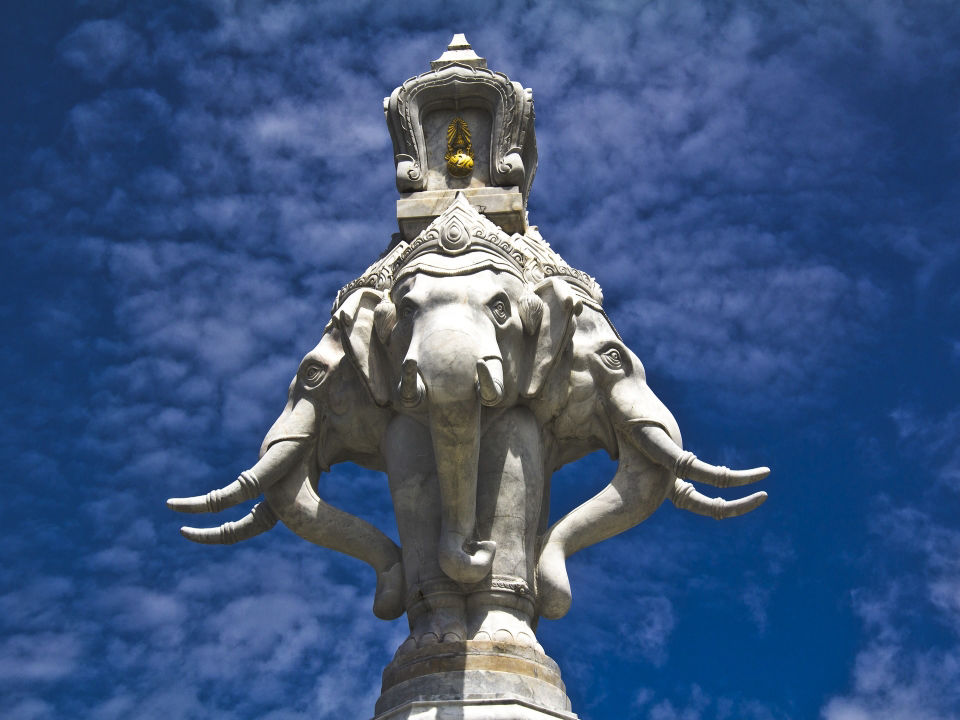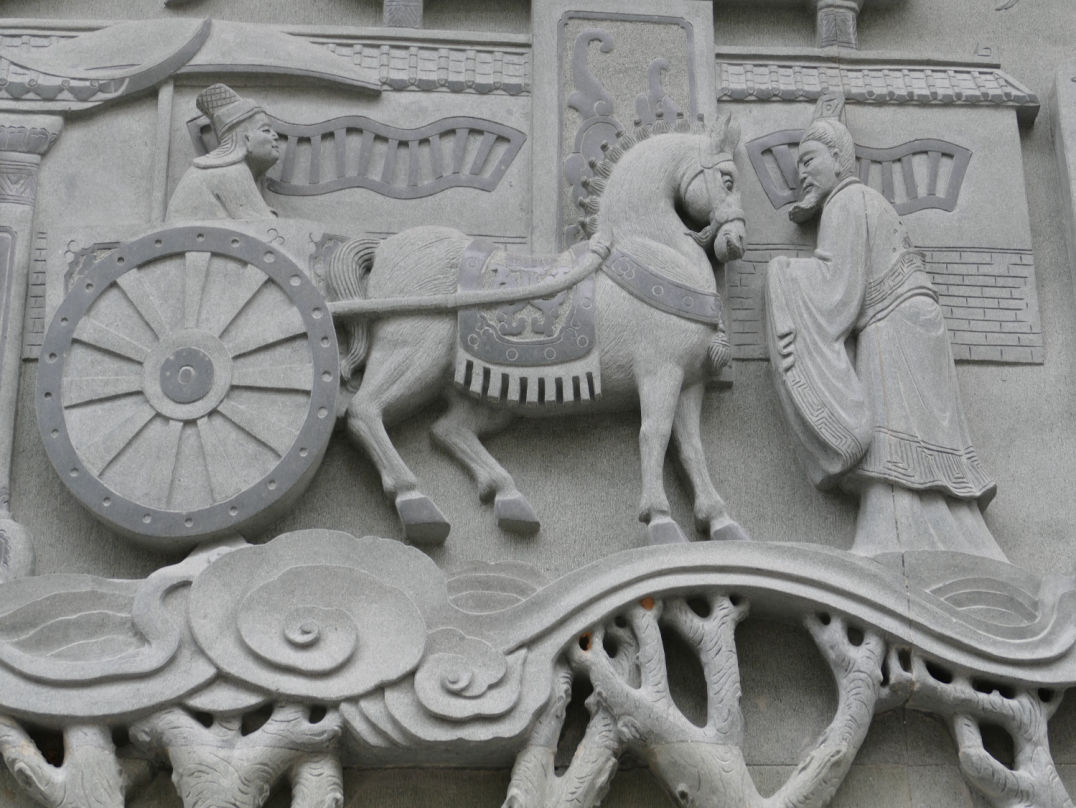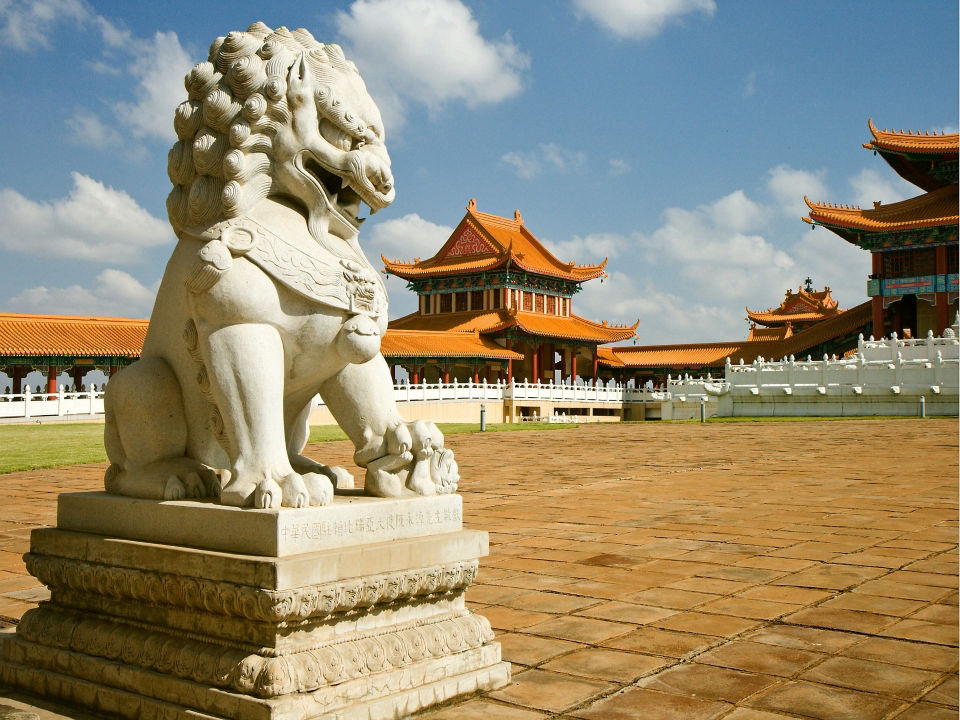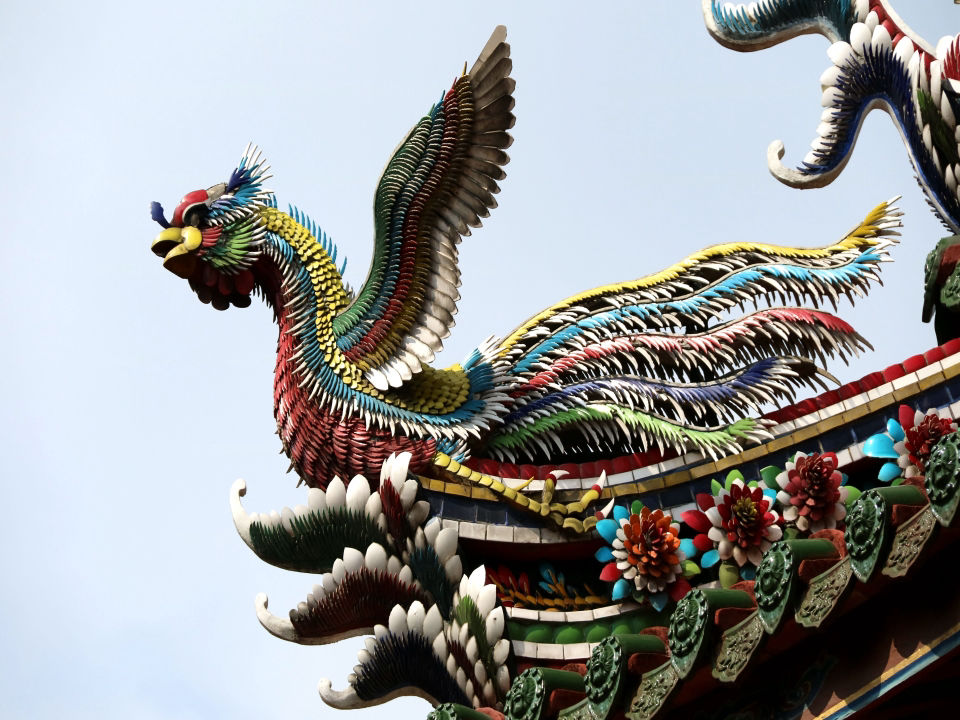The use of animal symbols is an important part of Buddhism and embodies the idea that everything that is alive possesses an inherent virtue, power and wisdom. Animal symbols contain secret meanings related to specific characteristics of the animals they represent and highlight the Buddhist relation to nature, kindness, humanistic ideas, emphasizing the relationship between Buddhist theory and practice.
In Buddhism, deer symbolize peace, harmony and longevity. They are by nature gentle and serene and their presence represents the purity of a sacred place, bereft of fear. Foremost, the deer symbolize the Buddha’s most essential teachings and the act of receiving them. It was in the Deer Park that the Buddha gave his first teaching.
The Buddha is often shown sitting on a dais with two deer kneeling facing each other. Additionally, many monasteries feature the dharma wheel with two deer sitting on each side, gazing steadily at the wheel, with great joy.
Deer are also represented in the Jataka Tales, which are fables attributed to the past lives of the Buddha as human and animal, with messages of wisdom and compassion.
In India, nagas are water spirits who live in wells, rivers, and lakes, and float in clouds. They are depicted as huge cobras or as half-human and half-snake. They play an important role in Mahayana and Theravada mythology as protectors of the Buddha and the sutras. In one legend, a naga king named Muchlinda sheltered the Buddha during a heavy rain just after the Buddha’s enlightenment. He coiled around the Buddha’s body and transformed his hood into an umbrella over the Buddha’s head. Buddha statues that symbolize this legend are famous in Burma, Laos, and Thailand. As Buddhism spread through China, nagas became identified as dragons.
Buddhists offer vases of jewels to nagas for abundant crops, health, and children, as well as to stop epidemics, earthquakes, and floods. Nagas are vulnerable to contamination by water pollution and deforestation. They will protect people who protect nature, but will breathe toxic air on those who destroy the environment.

In Asia and Africa, elephants are deemed sacred. They are symbols of beauty, power, dignity, intelligence and peace. The white elephant was significant in the Buddha’s birth. His mother, Queen Maya, dreamed of a white elephant who offered her a white lotus with his trunk and entered her womb. The royal sages predicted the birth of a great monarch or a Buddha.
In Buddhism, elephants symbolize mental strength on the path toward enlightenment. They are tranquil and obedient, steadfast and unstoppable once set on a path; and have large ears to listen to the Dharma. At the beginning of practice, the uncontrolled mind is symbolized by a gray elephant. After practicing and taming the mind, the controlled mind is symbolized by a white elephant, strong and powerful, which can be directed toward liberation.
Universal Worthy Bodhisattva rides a six-tusked elephant evoking the Power of Knowledge for man’s awakening, found in Chapter 40 of the Flower Adornment Sutra.

In Buddhism, the horse is a symbol of energy and effort in practicing the Dharma. The main qualities of a horse are loyalty and swiftness as shown by Kanthaka, Siddhartha’s horse who helped him escape the palace and begin his spiritual quest. When Siddhartha bade him farewell, Kanthaka died of grief, but was reborn as god and served him as a Buddha.
The neigh of the horse is symbolic of the Buddha’s voice to awaken the sleepy mind to practice the Dharma. It also represents the prana or breath that is essential for our existence.
The mythical "Wind-Horse" is a symbol in Tibetan Buddhism. It combines the speed of the wind and the strength of the horse to control the mind and guide it toward liberation. It is often used on prayer flags to carry prayers from heaven to earth. It also bears the “Wish Fulfilling Pearl” and represents good fortune to make things go well.

For thousands of years, the lion has been a symbol of royalty, strength and bravery. For these reasons, the lion symbolizes the royal origins of Buddha Shakyamuni, as well as his courage in challenging injustice and alleviating human suffering. He is referred to as “Lion of the Shakyas,” an acknowledgment of the power of his teachings. The Buddhas’ voice is often called the “Lion’s Roar,” roaring out the Dharma for all to hear. The symbolic meaning of the lion’s roar reminds us to strive with the courageous heart of the lion king and overcome obstacles in our path, creating happiness and harmony in our lives and in society.
The lions serve as guardians, represented in pairs at the entrance of shrines, temples, and monasteries. They are symbolic of the Bodhisattvas, the "Buddha's lions," and can be found in their role of Dharma protectors supporting the throne of Buddhas and Bodhisattvas and serving as their mounts. Mañjuśrī, the Bodhisattva of great wisdom mounts a lion, symbolized in The Flower Adornment Sutra (Avatamsaka).

The mythical phoenix is deeply rooted in Chinese and Japanese culture and is used as emblems of the emperor and empress, shown with the dragon to symbolize a perfect marriage. The phoenix is a benevolent bird, as it does not harm insects and represents the Confucian values of loyalty, honesty, decorum and justice.
In Buddhism, the phoenix is regarded as sacred, as it appears only in times of peace and prosperity and hides itself when there is trouble. Like the deer, it symbolizes peace and tranquility. The mythical creature can also represent “an enlightened one”, rising from the ashes of the death of ego.
A common depiction of the phoenix is of it attacking snakes with its talons and its wings spread. It has a bird's beak, a swallow's jaw, and a snake's neck; the front half of its body is thought to resemble a giraffe, the back half a deer. Its back resembles a tortoise, and its tail is like a fish. The phoenix also one of the four spiritual creatures in Chinese mythology who guard the four directions and seasons: dragons, tigers, unicorns and phoenix.